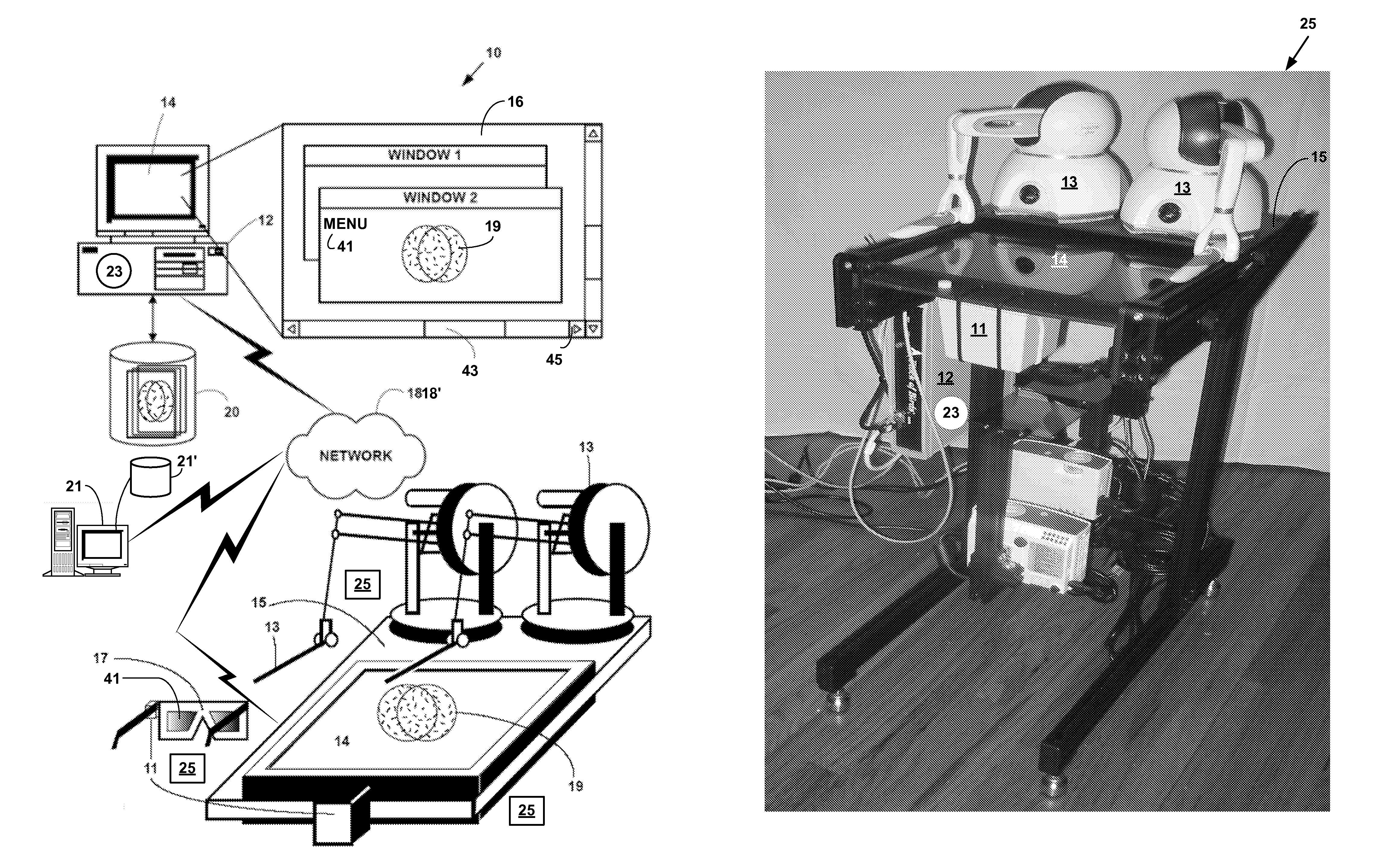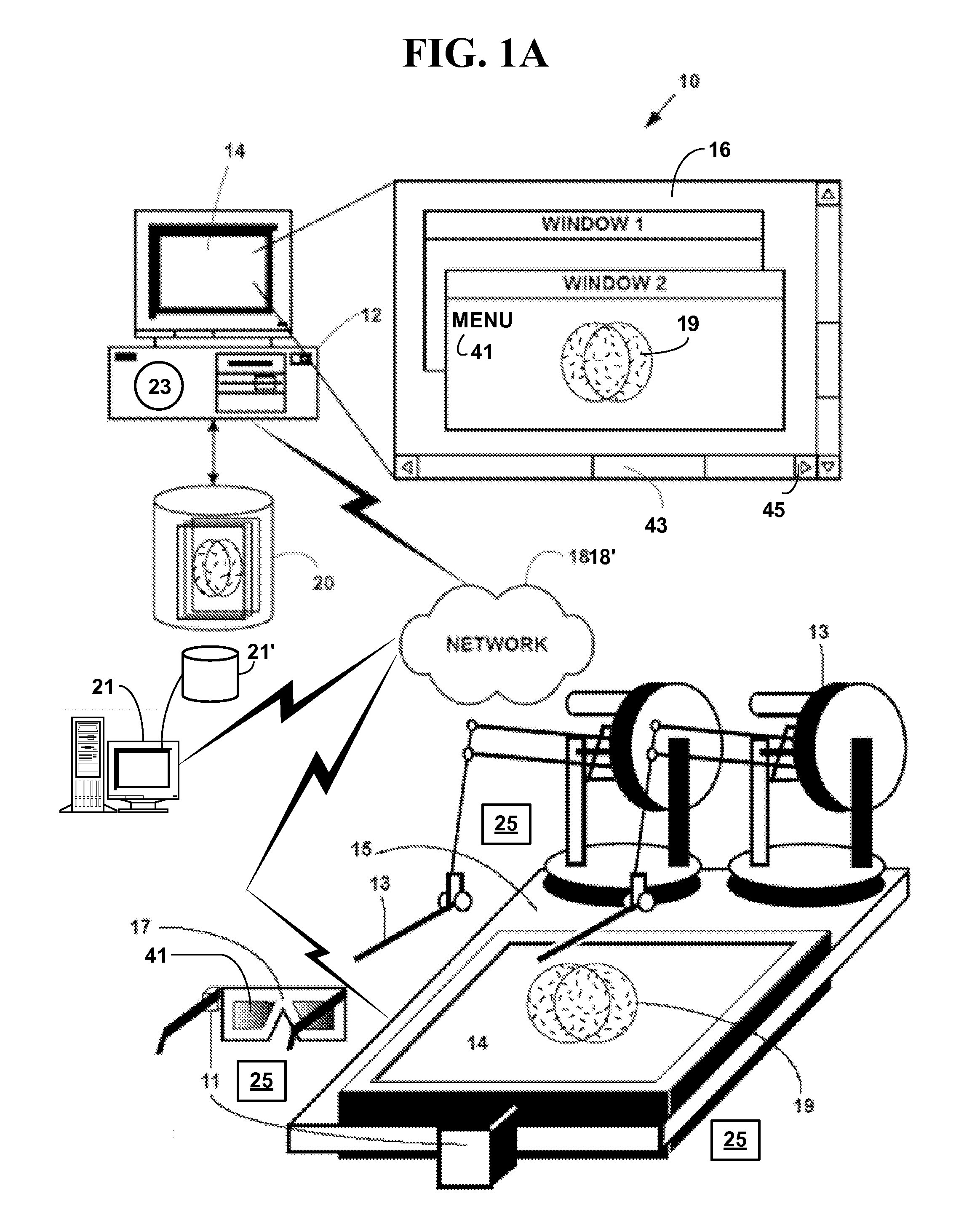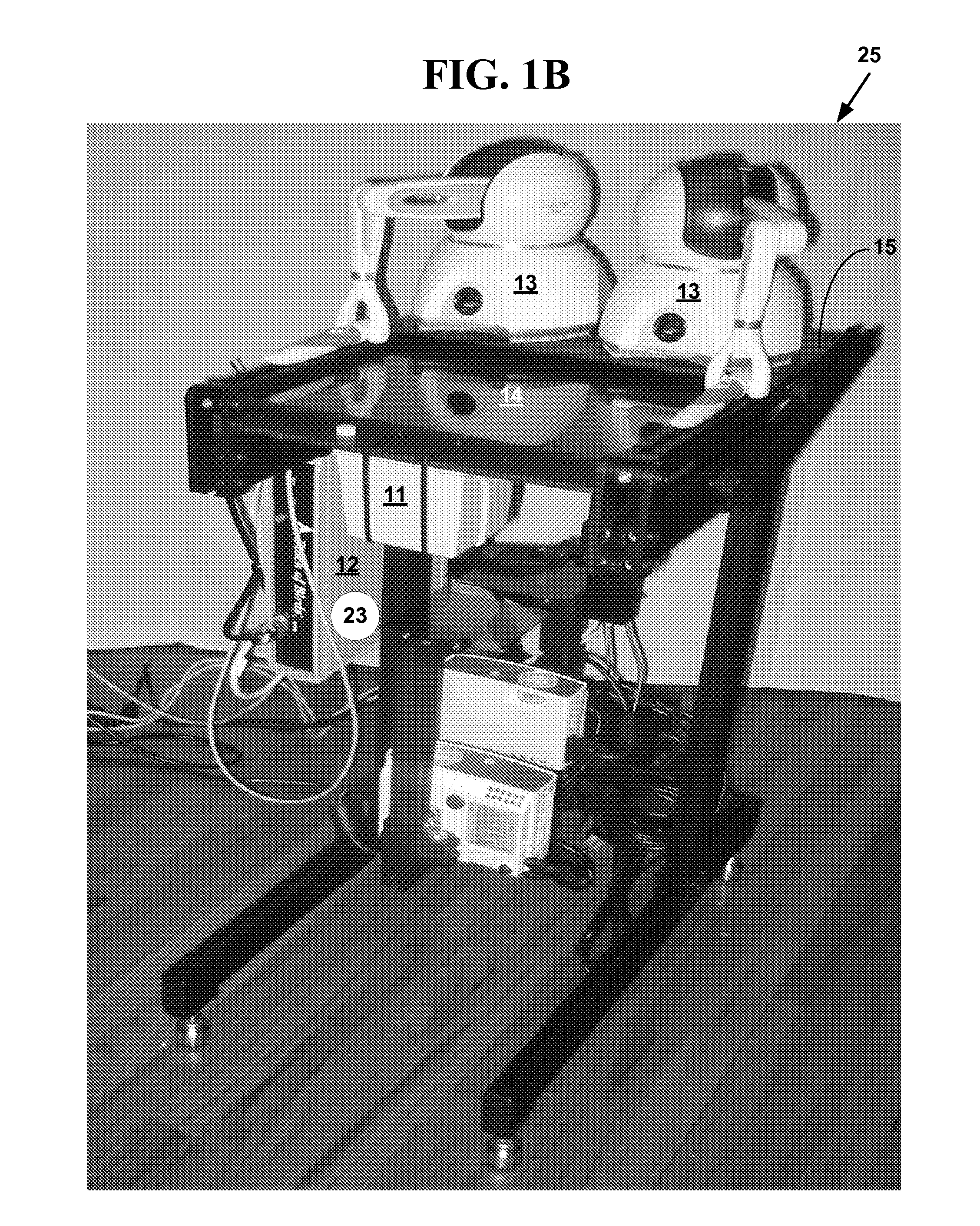Method and system for interactive simulation of materials and models
a simulation method and material technology, applied in the field of computer simulations, can solve the problems of -body simulation, difficulty in simulating rigid or semi-rigid objects, and inability to simulate soft objects
- Summary
- Abstract
- Description
- Claims
- Application Information
AI Technical Summary
Benefits of technology
Problems solved by technology
Method used
Image
Examples
Embodiment Construction
[0068]FIG. 1A is a block diagram illustrating an exemplary simulation system 10. The exemplary system 10 includes one or more network devices 12 each with one or more processors or central processing units (CPUs), an application 23 and one or more displays 14 (two of which are illustrated). The display 14 may include any of a windowed graphical user interface (“GUI”) 16 with multiple windows, or one or more simulation views 19, to a user. One or more databases 20 (one of which is illustrated) include data in various digital data formats. The databases 20 may be integral to a memory system on the network device 12 or in secondary storage such as a hard disk, floppy disk, optical disk, or other non-volatile mass storage devices. The network device 12 and the databases 20 may be in communications with and accessible via one or more communications networks 18 including a cloud communications network 18′ (FIG. 15).
[0069]The network devices 12 are in communications with a cloud communicat...
PUM
 Login to View More
Login to View More Abstract
Description
Claims
Application Information
 Login to View More
Login to View More - R&D
- Intellectual Property
- Life Sciences
- Materials
- Tech Scout
- Unparalleled Data Quality
- Higher Quality Content
- 60% Fewer Hallucinations
Browse by: Latest US Patents, China's latest patents, Technical Efficacy Thesaurus, Application Domain, Technology Topic, Popular Technical Reports.
© 2025 PatSnap. All rights reserved.Legal|Privacy policy|Modern Slavery Act Transparency Statement|Sitemap|About US| Contact US: help@patsnap.com



